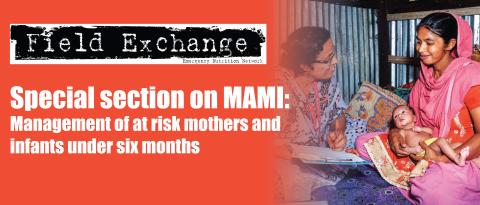Revised CMAM Training Guide
The Food and Nutrition Technical Assistance III Project (FANTA), in collaboration with partners (Action Against Hunger, Alliance for International Medical Action (ALIMA), Concern Worldwide, Emergency Nutrition Network (ENN), International Medical Corps (IMC), International Rescue Committee (IRC), Management of At-risk Mothers and Infants under 6 months (MAMI) Special Interest Group, Save the Children, UNICEF, United States Agency for International Development (USAID), World Health Organization (WHO) and World Vision) have updated the CMAM Training Guide to reflect the latest guidance and emerging evidence on the management of acute malnutrition. The updated guide is designed for healthcare managers and healthcare providers who manage, supervise and implement CMAM in both emergency and non-emergency contexts.
The 2018 update reflects guidance and recommendations provided in the following publications and tools: Updates on the Management of Severe Acute Malnutrition in Infants and Children (WHO 2013); Updates on HIV and Infant Feeding (WHO 2016); Technical Note on Supplementary foods for the management of moderate acute malnutrition in infants and children 6–59 months of age (WHO 2012); Joint Statement on WHO child growth standards and the identification of SAM in infants and children (WHO/UNICEF 2009), and Community based management of at-risk mothers and infants under 6 months (C-MAMI) Tool version 2.0 (ENN, LSHTM, Save the Children, GOAL, MAMI Special Interest Group, July 2018). It also provides additional guidance based on the most recent evidence, lessons learned and best practice.
Below are highlights of the changes made to the Training Guide:
- Identification, admission and discharge of children aged six months to five years with acute malnutrition using mid-upper arm circumference (MUAC) and bilateral pitting oedema as the primary criteria in the community for the initial screening of acute malnutrition and referral for treatment. The use of weight-for-height/weight-for-length (WFH/WFL) for admission and discharge is also included.
- Training of mothers and caregivers on MUAC measurement and assessment of bilateral pitting oedema of their children to facilitate early case detection and referral for treatment.
- Vitamin A supplementation in the treatment of severe acute malnutrition (SAM).
- Management of HIV-infected children with SAM.
- Inclusion of assessment and case management of at-risk mothers and infants under six months of age.
- The use of the combined protocol for SAM and moderate acute malnutrition (MAM) treatment.
- Strengthening the health system, including planning and managing increased demand for acute malnutrition.
Ongoing research and emerging evidence on the management of acute malnutrition is anticipated to become available between 2018 and 2020. Where necessary, online links to research and global discussions on specific topic areas have been provided in each Training Guide module. Additional emerging issues not included in this revision will be documented for future revisions.
The Revised Training Guide for CMAM, 2018 can be download from the FANTA website here.


